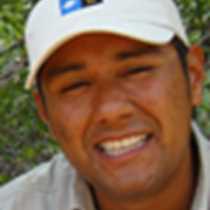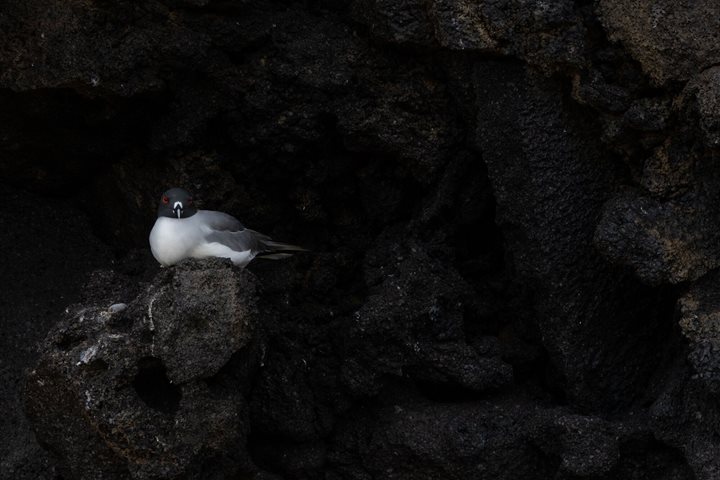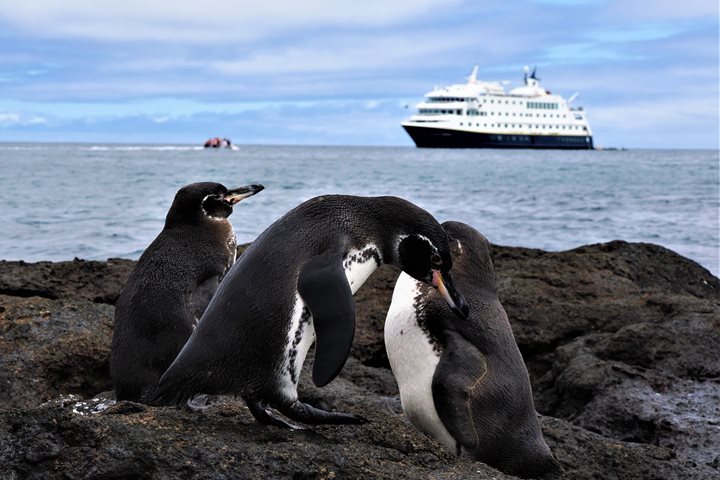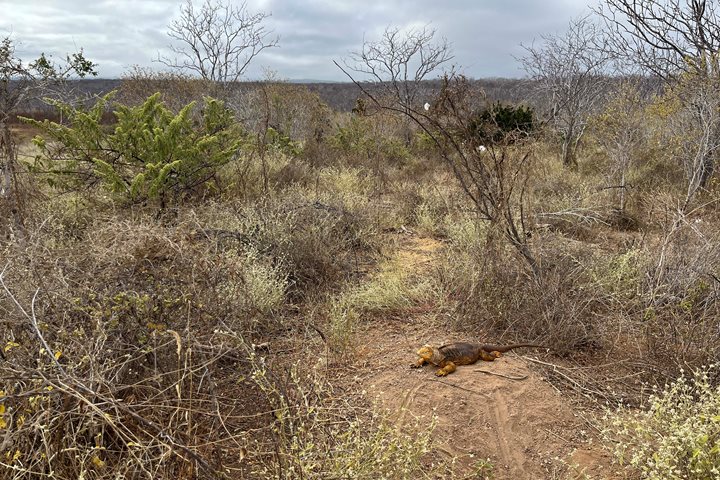Our exploration of Isabela Island began very early this morning. The moisture was heavy as we landed at this geologically significant site. Urbina Bay was uplifted in 1954, prior to volcanic activity at Alcedo volcano on Isabela. As pressure was building in the internal volcanic plumbing of this area, a couple of square kilometers of this shallow bay were thrust out of the water in certain regions, up to three or four meters. Coral heads and many species of invertebrates were stranded inland, and the coastal environment was changed drastically. We encountered remnants of coastal species inland as we searched for land iguanas and unique plant species. Large coral heads that were built up by the coral polyps over hundreds of years greeted us, and as we progressed along the trail, we became surrounded by salt resistant vegetation that has overtaken this ground. Among the endemic Darwin’s shrubs and poison apple trees we found numerous land iguanas warming themselves along the path. As we approached the edge of the uplift, we were very surprised to find a young Galapagos tortoise feeding on the new vegetation. A light rain began to fall as we made our way to the beach, where we encountered several more Galapagos tortoises. The diversity of life in this new coastal area in such a short amount of time is astounding. We returned to our ship, the captain lifted anchor and began navigating towards our afternoon site.
Tagus cove is a protected anchorage along the western coast of Isabela and we witness its history as it is written on the surrounding cliff walls. Graffiti has traditionally been left here by past navigators, hoping to make a claim or, just to register their presence. The oldest markings date back to 1836, one year after Darwin’s visit to this same site.
Afternoon activities abound, as we kayaked and snorkelled along the inside of the cove. Our exploration of the underwater realm showed the range of wildlife in the colder waters of the western archipelago. We watched an incredibly robust marine iguana diving deep into the ocean, and proceeding to feed for the next five minutes, holding onto the rocky bottom. Pacific green sea turtles appear to enjoy the same meal as they calmly pass by. Flightless cormorants and penguins fleeted around us, showing that they are truly built for this water environment. The variety is inconceivable, and we found a Galapagos horn shark, an octopus, sea lions, and an abundance of fish species all going about their daily routines. The day was still young, as we dried ourselves and headed out again, for an invigorating hike to the top of Tagus Cove. The view was otherworldly, as lava flows have mixed with the incense trees surrounding the rippling surface of Darwin’s Lake. A light breeze gently caressed our faces as the sun began to set on another unique adventure in this special place.







